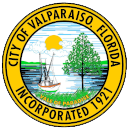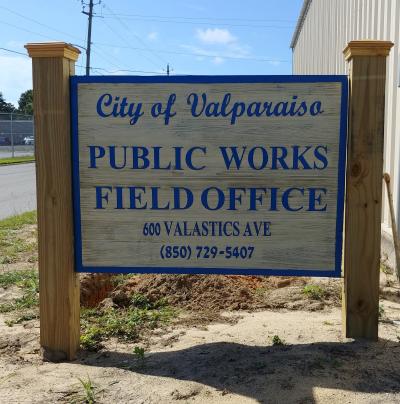
Overview
Our mission is to protect and enhance the quality of life for Valparaiso residents, businesses and visitors by delivering responsive, efficient and cost effective services to every neighborhood and customer through continuously demonstrating a “can-do” attitude in the performance of our duties.
The Public Works Department has many divisions to include Parks, Streets, Stormwater, Sanitation, Water, Wastewater, Animal Control, Fleet Maintenance, and the city-owned Sunset Cemetery.
Parks Division
Maintains eleven City Parks for residents and visitors
Sunset Cemetery
Located on Tom’s Bayou just off of Virginia Ave, this 8 acre cemetery offers both traditional burial and inturnment of cremains. The cemetery has one full-time employee and provides perpetual care.
Streets Division
Maintains all City streets, sidewalks, storm drains, and right of ways.
Stormwater
Stormwater runoff, a critical pollutant carrier, generally discharges into the surface water of our bayou and ponds. These pollutants consist of oil, heavy metals, pesticides, herbicides, and fertilizers originating from lawns, vehicles, and septic tanks. Stormwater runoff is generated from many different land surfaces and is impacted by the behaviors and activities of individuals, households, and the public. These common individual behaviors have the potential to generate stormwater pollution including:
· littering,
· disposing of trash and recyclables,
· disposing of pet-waste,
· applying lawn-chemicals,
· washing cars on driveway instead of grass,
· changing motor-oil without drip pan and
· disposing leftover paint and household chemicals.
Inlets: Stormwater inlets are the concrete drains that you see along the streets. These drains are used to convey stormwater to prevent flooding of the streets, businesses, and homes. If these drains become full of yard debris or other garbage, they do not work properly.
Please do not blow yard clippings and leaves in the roadway. These items wash down the streets and into the stormwater drains where they plug the system allowing streets, homes, and business to flood. Do not dump any type of oil, gasses, antifreeze, household chemicals, BBQ grill briquettes, etc. into the drain or onto the side of the road where they will wash/run down into the drains. This adds to the pollutants in the waterways.
Everyone can do their part to keep Valparaiso the “Vale of Paradise”
WHAT IS AN ILLICIT DISCHARGE? WHAT ARE THEY LIKE? HOW DO I RECOGNIZE ONE?
Basically, an illicit discharge is allowing any contaminant to enter the City’s storm sewers. They were designed to handle water, so as to prevent flooding, and not as a place to dump or discharge waste. There are two situations which constitute illicit discharges—runoff from contaminated sites, and deliberate dumping.
RUNOFF FROM CONTAMINATED SITES

This kind of discharge is not always visible, since while some pollutants cause obvious discoloration or cloudiness in the water, most don’t. You often don’t actually see the discharge, but may see telltale signs such as dead plants on the banks, dead fish and so on.
This kind of discharge usually happens during rain (but not always). It generally consists of pollution material that was spilled on the ground or pavement at the site, or possibly from contaminated containers stored at the site and exposed to rain.
CLUES TO LOOK FOR
First, we’ll talk about the runoff type. If it has rained recently, the polluted water may still be flowing in the ditches or culverts. The water may be discolored or murky. It may have an odd smell. (However, a word of caution: don’t go sniffing around an illicit discharge! It may be dangerous.)
Maybe the runoff event didn’t happen recently, but there still may be evidence that something happened. The vegetation along the ditch banks may be dead if the material was toxic to plants. There might be dead fish or other animals in the water or along the banks. There might be unnatural discoloration of the mouth of a culvert or on the concrete wing wall below a culvert.
For example, a bumper plating shop discharge might turn the concrete bright green.
Some of these things can be explained naturally; fish can die of natural causes or discolored water may be due to algae for example. But it might just as easily be due to an illicit discharge. Don’t leave it to chance. Go ahead and report it to the Public Works Dept at 850-729-5407.
DELIBERATE DUMPING
Now a word about deliberate dumping. It is likely you won’t observe this directly, because the people doing it purposely try to do it when they won’t be seen. This isn’t always the case, however; some people just don’t realize that the storm sewer carries water to lakes and the coastal areas – they think it goes to a waste treatment plant.
Dumping may not consist of a person emptying a bucket or drum of waste. It may be a tank truck draining its contents through a hose into a manhole. Sometimes this is legal; septic tank cleaning people may have a permit allowing them to discharge to the sanitary sewer system through a manhole.
Dumping may consist of a hose running out the back door of an industrial site and into a ditch, or simply into a wooded lot or even into the street.
Often you will see evidence that illicit dumping has occurred, such as discoloration of channels and pipes.
Another telltale sign of a possible illicit discharge is flow when there shouldn’t be any. In general, ditches and other channels should be carrying water just after a rainfall event. Depending upon the size of the area being drained, the ditch might continue to flow for a day or more following a large rain. Ditches may have some flow, even when it hasn’t rained recently, since groundwater can seep into the banks of the ditch. This is called base flow, and is generally very low. If it hasn’t rained recently, but you observe a significant flow in a ditch, or coming out of a culvert, there is a good chance that someone is discharging wastewater into the system.
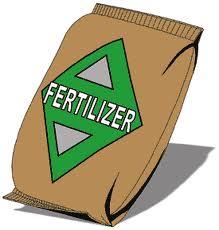
You might see a pile of empty pesticide containers or bags discarded on a vacant lot or in a ditch. You might observe pallets filled with bags of fertilizer or other products sitting outside exposed to rain. You might see old drums discarded in an open lot or in the woods. Even if we aren’t able to trace these to the responsible party, they still are a very likely source of contamination and will need to be reported so they can be removed and disposed of properly.
This kind of discharge is sporadic, often occurring at night or on weekends, when the person involved thinks nobody is looking.
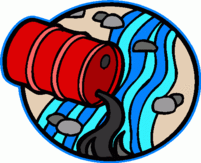
This kind of discharge could be toxic since it is often done by businesses trying to get rid of industrial wastes without having to do it properly. As a result, you really need to avoid coming in contact with it, or even breathing fumes if it is volatile.
Often we need to make a quick decision to respond to this kind of event. If you see it actually occurring, it needs to be reported immediately so proper action can be taken. Later, after it has already happened, it may be too late; the damage may have already been done.
IF I SEE DELIBERATE DUMPING, SHOULD I TELL THEM TO STOP?
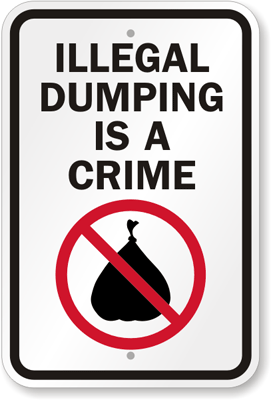
People deliberately dumping are breaking the law, and sometimes they know it but do it anyway. You shouldn’t take chances by confronting people like this. Report it to the Public Works Dept or the Police Dept immediately, and if it needs to be stopped, a law enforcement officer can take steps to stop it. Whether it needs to be stopped immediately can be determined depending upon the other observations you make. We will discuss what kinds of things you need to look for shortly
IF I SEE DRUMS STORED IN THE OPEN AT A PLACE OF BUSINESS, SHOULD I TALK TO THEM ABOUT IT?
You shouldn’t take it on yourself to try to interpret the law to business people. It is only a violation of our ordinance if pollutants are actually entering the storm sewer system. Even then, you can help most by reporting it and letting others decide what needs to be done. If you observe unsanitary business practices such as storage of materials where they are exposed to rain, report it.
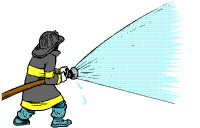
LEGAL DISCHARGES
Some discharges are NOT considered illegal under the City’s ordinance. These include:
- Flows from firefighting
- Water line flushing and other contributions from potable water sources
- Landscape irrigation and lawn watering
- Irrigation water
- Diverted stream flows
- Rising groundwaters
- Direct infiltration of groundwater to the storm water system
- Uncontaminated pumped groundwater
- Foundation and footing drains
- Water from crawl space pumps
- Uncontaminated air conditioning condensation
- Springs
- Individual residential car washing
- Filter backwash from residential swimming pools
- Flows from riparian habitats and wetlands
Note, not all of these are considered good practices but are exempt from ordinances unless such a discharge is really causing significant harm to water quality or aquatic life.
- It is not a good idea to backwash your swimming pool filter directly into a ditch or other water body; the chlorine that you put into your pool to kill bacterial will also kill aquatic life
- If you wash your own car, it’s a good idea to do it over your lawn, so the soapy water can be absorbed by the lawn and not run down the street and into the storm sewer system, or to a lake
WHAT KIND OF THINGS SHOULD I REPORT?

Location – It is extremely important to provide a good location so that the next person investigating the problem won’t have any trouble finding it. If there is an address at the site, it might be simple to say something like “storm drain in front of 1219 N. Bayshore Dr”, but oftentimes, there won’t be an address. You can use directional instructions like “200 ft east of the intersection of John Sims and Grandview Ave”.
What you observed – Whatever it was that you observed may not be so obvious to another person. Be sure to describe thoroughly what you saw, or what happened, that made you suspect an illicit discharge.
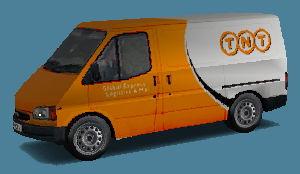
Any identifying marks – Was there a commercial vehicle or car at the site? Did the truck have an identification on the door panel? Any telephone number? Any information of this kind can be very useful in attempting to determine who was responsible. Even an automobile license number is helpful. Remember, however; we don’t want you taking risks. If you have to confront the person dumping in order to copy down their license number, then maybe you’d better not take the chance.

Photos – If you happen to have a camera or cell phone with you, it would be very useful if you were to take a few snapshots of what you observed. If you do, be sure to identify on a piece of paper the date taken, the place taken and sign it. If you do, it may end up being used as evidence; if you don’t, it probably won’t be useful. It also helps to sketch a map of the site on your report, and identify where each photo was taken, and from what direction.
Sanitation Division
Provides garbage pickup twice a week to residential customers and three times a week to commercial customers. Residential customers must place their bagged waste in city containers. The city provides house service.
Leaves and limbs are collected once a week and should be placed in front of the residence, on the curb, not in the street. Tree limbs should not exceed 4” in diameter. All debris generated by contractor shall be removed by contractor.
Bulk pickup is collected once a week, and should be placed on the curb, separated from green waste. There may be an extra charge for unusually large amounts of bulk trash.
Recyclable material collection- We collect, bale and transport material to a recycling center. There are two drop off locations (City Hall and Lewis Middle School) for residents to bring their items. This decreases the waste stream that would otherwise go to a landfill and offers an alternative means of disposal. There is no increased cost associated with this service.
Materials accepted:
Please place items in designated bins.
1) Cardboard- Corrugated Cardboard or Boxboard (cereal box)
2) Mixed paper/newspaper
3) Plastics- #1 (PET or PETE) and #2 (HDPE)
4) Aluminum cans, money collected is donated to the fireworks fund.
Due to the current market, it is not cost effective to recycle glass containers at this time.
Please help us out! Reduce, Reuse, Recycle
Utilities
Water Service is available to all residents and The City of Valparaiso Water division is committed to providing a constant supply of safe and dependable drinking water and adequately supplying fire protection throughout the city. Our system consists of four (4) supply wells, three (3) elevated storage tanks, approximately 20 miles of water lines, 2,200 meter connections and over 200 fire hydrants. The City provides on average 114 million gallons of drinking water to our customers annually. All water is from ground water wells from the Floridan Aquifer and is of such quality as to only require chlorination for disinfection and odor control purposes.
Please contact Public Works to have water turned on or off at the meter. By ordinance customers are not permitted to disturb in any way the meter or shut off valve. We will waive the initial service charge if customer installs a shut-off valve.
Wastewater Service (if available) provides 24-hour emergency response to residents. Residents are responsible for the installation and maintenance of a sewer clean-out on the right of way. If an emergency occurs during business hours call (850) 729-5407 after hours call (850) 729-5400. We maintain approximately 24 miles of wastewater piping and 18 pumping stations throughout the city.
Animal Control
Dogs found at large will be impounded by the City and held up to 72 hours before being turned over to Panhandle Animal Welfare Society (PAWS). Contact the Police Department at (850) 729-5400 if your dog is missing. Cats are held no more than 72 hours before being transported to PAWS. Live traps are available, to catch stray cats, at the Public Works Field Office located at 600 Valastics Ave with a $50.00 deposit. If the owner of an impounded animal is known or can be identified, the owner will be immediately notified by telephone or mail.There is a $30 per day charge for all impounded animals.
City Ordinance requires residents to keep all dogs under restraint or confined to a fenced yard at all times and not allowed to run at large. City encourages all cats and dogs to be spayed or nuetered. Special confinement procedures are necessary when dogs and cats are in heat to prevent unplanned pregnancies.
It is unlawful for any person to keep or maintain, within the City, any dog, cat or other animal capable of having rabies unless such animal has been inoculated for rabies annually and has a metal tag evidencing such inoculation for rabies, permanently attached to a collar. Failure to provide proof shall result in a citation issued in violation of Sec. 10-9 of the City of Valparaiso Code of Ordinances, punishable by a fine of $500.00.
Dog waste stations are placed along some walking routes. Please pick-up after your pets.
Valparaiso is a bird sanctuary and it is unlawful to trap, harm or kill birds within the city limits.
For all wildlife concerns please reference the Florida Fish and Wildlife Commission’s Web page on Living With Wildlife:
For more information, please click link for the Chapter 10: Animal Control Code of Ordinance at https://library.municode.com/fl/valparaiso/codes/code_of_ordinances?node...
